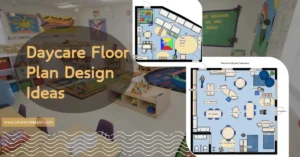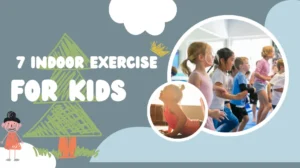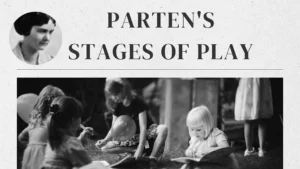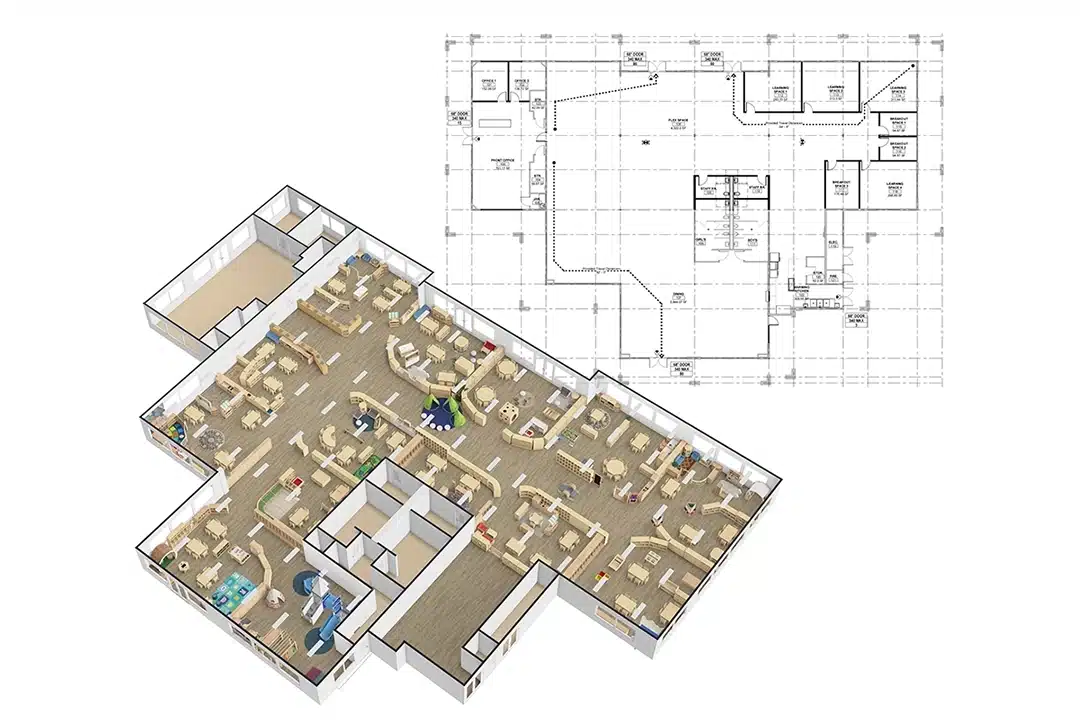Designing a daycare nap room sounds simple—just a few mats and some quiet time, right? But every experienced childcare professional knows it’s much more complex. Children arrive with their sleep routines, comfort needs, and sensitivities. Some can drift off anywhere; others need the perfect environment to rest. The real challenge is to create a nap space that helps every child feel safe and comfortable, no matter their personality or background.
When a nap room isn’t set up thoughtfully, the problems start small and grow quickly. Maybe the room is too bright, so light sleepers toss and turn. Perhaps it’s too noisy, and every footstep in the hallway wakes up half the class. Sometimes bedding is scratchy, mats are packed too close, or the air feels stuffy and stale. The result? Restless children, more behavioral problems in the afternoon, and frustrated staff struggling to reset the space for the next group. Parents might notice, too—nobody wants to pick up a child who’s cranky from a missed nap.
The good news is that you don’t need a massive budget or a brand-new building to fix these problems. With careful planning and a few thoughtful touches, any daycare can create a nap room that supports children’s emotional and physical well-being. A well-designed nap area calms anxieties, promotes healthy sleep habits, and gives teachers confidence that their classroom is truly child-centered. This guide draws on real-world daycare experience to show you exactly how to create a safe, calming nap room—one where every child can relax, recharge, and feel at home.
Introduction
Nap time isn’t just a scheduled break—it’s a cornerstone of every successful daycare program. When children have a place to rest that feels both secure and inviting, they gain more than just sleep: they gain the emotional comfort that sets them up for a happier, more productive day. As childcare professionals, we know the environment shapes how well a child can settle, nap, and reset for the challenges ahead.
But what does a truly effective daycare nap room look like in practice? It goes far beyond lining up cots in an empty classroom. A great nap room takes into account every detail—where the light falls, how sounds travel, which materials soothe and which overstimulate, and how to make each child’s personal space feel respected. It means considering safety at every turn, balancing hygiene with comfort, and choosing furnishings that fit real children’s needs.
Throughout this guide, you’ll find hands-on advice for creating a daycare nap room that’s as functional as it is nurturing. We’ll share tips drawn from leading early childhood educators, practical product recommendations, and simple design strategies you can use in any setting—big or small, old or new. Whether you’re building a new facility or refreshing your current space, these insights will help you transform your nap area into a calm, safe retreat that supports children’s health, happiness, and development.

What is a Daycare Nap Room?
A daycare nap room is one of the most essential environments in any childcare center. While children play, learn, and grow in many different areas throughout the day, the nap room is the place where their bodies and minds have a chance to rest and reset. In the hustle and bustle of a daycare, this calm space stands apart—it is dedicated to relaxation, quiet, and the well-being of every child.
Creating a proper daycare nap room is not just about meeting regulations or providing a space for children to sleep. It is about recognizing the critical role that quality rest plays in child development. Thoughtful design of the nap room, from lighting and layout to safety and comfort, can directly impact how well children adjust, how much they benefit from their naps, and how confidently staff can care for each child.
Below, we explore why a dedicated nap room is so important in the daycare setting and what makes a nap room truly effective for both children and caregivers.
The Importance of a Dedicated Nap Room in Daycare
A dedicated daycare nap room is a space planned solely for children’s rest. Unlike makeshift nap corners or temporary sleeping arrangements, a true nap room is built into the daily rhythm of the daycare. This stability helps children know what to expect—where they’ll rest, how the environment will feel, and when it’s time to wind down.
A well-maintained nap room reduces stress, promotes a sense of routine, and offers children a clear boundary between activity and sleep. The consistency of this environment is especially important for younger children and those who may be anxious or adjusting to group care.
Benefits of a Well-Designed Nap Room for Children and Staff
A well-designed daycare nap room provides significant benefits, not just for children but also for staff and families:
- Promotes Healthy Sleep:
Calm lighting, soft textures, and reduced noise help children fall asleep more quickly and enjoy deeper, more restorative naps. Quality sleep supports physical growth, brain development, and better moods throughout the day. - Emotional Security and Comfort:
A familiar nap room helps children feel safe and at home, even when away from their families. This security supports smoother transitions and reduces separation anxiety. - Encourages Positive Behavior:
Children who get the rest they need are more likely to participate, cooperate, and enjoy activities. Well-rested children have fewer tantrums and recover from emotional upsets more quickly. - Supports Staff Efficiency and Peace of Mind:
For caregivers, a well-organized nap room means easier supervision, less time spent settling children, and more confidence that all safety and comfort needs are being met.
Ultimately, a thoughtfully designed daycare nap room is a clear sign of quality care. It assures families that their children are valued, respected, and well cared for—even while they sleep.
Where Do Children Sleep in Daycare?
Children don’t all sleep the same way, especially in group care settings. Infants, toddlers, and preschoolers have very different needs when it comes to rest, and where they sleep often depends on their age, development, and how the center is structured. A well-thought-out nap space supports these differences while still functioning smoothly for staff.
Infant Nap Areas
Infant nap rooms are some of the most sensitive and carefully controlled environments in any early childhood setting. Newborns and babies under 12 months follow their rhythms, napping several times a day rather than on a fixed schedule. That’s why infant sleep rooms are designed to be calm, quiet, and highly individualized.
Each baby has their crib, ideally spaced at least three feet apart to reduce the spread of germs and allow for safe supervision. These cribs meet safety standards—firm mattresses, no pillows or blankets, and slats that follow national safety codes. Teachers always place infants on their backs to sleep, following safe sleep guidelines.
The room itself is designed for peace:
- Lighting is soft and indirect.
- White noise may be used to mask outside sounds.
- Air circulation is carefully monitored to avoid stuffiness or overheating.
Most importantly, infants are constantly supervised. Whether sleeping or just beginning to stir, babies are never left unattended in a sleep room. Staff ratios are higher, and monitoring may include baby monitors or visual checks every few minutes.
Some childcare centers enhance comfort with soft color palettes, gentle nature imagery, or soft instrumental music during transition times. But the environment always stays soothing and straightforward—no bright posters, blinking toys, or distractions near the cribs.
Infant nap rooms aren’t just about rest—they’re about safety, responsiveness, and helping the youngest children feel entirely secure.
Toddler & Preschool Nap Areas
As children grow into toddlers and preschoolers, their nap needs change—and so do the rooms designed to support them. At this stage, most children nap once a day, usually after lunch. The timing is consistent, and the goal is to help children settle quickly into a calm, restful routine.
Instead of cribs, toddlers and preschoolers sleep on individual mats or low cots. These are lightweight, easy to sanitize, and spaced far enough apart to reduce noise and give each child a sense of personal space. Depending on the center, mats may be labeled with names or photos to give children a sense of ownership.
The nap area is often a multi-use classroom that transforms during rest time. Shelves may be covered, toys put away, and the lights dimmed. Staff might use visual cues like soft music or storytime to help the group transition into rest.
What matters most in this age group is predictability and comfort:
- Children often bring their own blanket or sleep toy (as long as it’s safe and permitted).
- Staff stay nearby to rub backs, soothe upset children, or sit close to those who struggle to fall asleep.
- The room doesn’t need to be silent, but the overall tone remains quiet and gentle.
Unlike infant rooms, where safety protocols dominate, toddler nap spaces balance supervision with emotional comfort. Teachers know who needs a little more help settling down—and which children need a few extra minutes to drift off.
Key Differences Between Infant and Toddler/Preschool Nap Areas
| Feature | Infant Nap Rooms | Toddler/Preschool Nap Areas |
|---|---|---|
| Sleep Schedule | Flexible, based on each baby’s rhythm | Fixed, group-based (usually after lunch) |
| Equipment | Individual cribs with strict safety rules | Mats or cots, often placed in shared classrooms |
| Supervision | One-on-one or constant observation | Active supervision, but less hands-on |
| Room Setup | Calm, dim, minimal visual stimulation | Transformed classrooms, calming cues used |
| Noise & Light | Soft lighting, quiet environment | White noise or soft music may be used |
| Hygiene & Spacing | High hygiene, 3-feet crib spacing | Personal mats, cleaned daily, spaced appropriately |
| Emotional Focus | Safety, security, soothing individual comfort | Routine, comfort, and emotional support |
These differences aren’t just about preferences—they reflect the real developmental needs of young children at different ages. An effective nap room setup understands these shifts and adapts the environment accordingly, creating the right kind of rest space for each stage of early childhood.


Overview of Space Requirements for Different Age Groups
Designing an adequate nap room means more than just arranging cots neatly across a floor. The amount of space each child needs—physically and emotionally—varies significantly by age group. Meeting these requirements isn’t just good practice; it’s often required by licensing bodies to ensure safe, hygienic, and developmentally appropriate care.
Here’s how nap space needs change across the most common daycare age groups:
Infants (0–12 months)
Infants require the most space per child when it comes to sleeping arrangements. Their cribs must be positioned with at least 3 feet (approximately 1 meter) of space on all sides to allow safe movement for caregivers and reduce the spread of germs.
Many childcare licensing rules also specify:
- Only one infant per crib
- Cribs must be free from soft bedding, pillows, and toys
- Each crib must be labeled and used exclusively by the same child each day
- Clear visibility for constant supervision is non-negotiable
Ventilation, temperature, and emergency access pathways are also top priorities in infant sleep rooms.
Toddlers (1–2 years)
As children become more mobile, nap setups become more flexible. Most toddlers sleep on low cots or padded mats arranged on the floor. Licensing often recommends at least 2 feet of space between mats, with walkways that allow staff to move easily and safely between children.
Other key considerations include:
- Assigning each child a consistent mat or cot
- Using washable bedding stored in separate, labeled containers
- Keeping personal comfort items clean and safe
Though toddlers nap in groups, centers should still create calm zones within the space, especially for light sleepers or those who take longer to settle.
Preschoolers (3–5 years)
By preschool age, nap time becomes less about sleep and more about rest and reset. Some children nap deeply, while others simply lie quietly. The space requirement per child is typically slightly less than for toddlers, though local regulations may still mandate minimum square footage.
What matters most at this stage:
- Consistency in setup (same mat, same place)
- Visual boundaries to encourage personal space
- Gentle transitions in and out of nap time
Preschool nap areas often double as classrooms, so cleanliness and ease of setup/breakdown are key. Furniture should be easily movable or collapsible, and routines should be simple enough for children to follow with minimal assistance.
Why Space Planning Matters
Giving children the right amount of physical space helps prevent sleep disturbances, limits the spread of illness, and improves supervision. But there’s also an emotional layer—children rest better when they’re not crowded, when they have a familiar spot, and when their bodies aren’t overstimulated by bright lights or close contact.
For staff, proper spacing makes daily routines smoother and safer. It allows for quick responses to needs, easier cleaning, and a clear view of every child at all times.
Whether you’re working with a large daycare center or a small home-based program, planning space thoughtfully helps transform your nap room from a simple rest area into a place of trust, comfort, and care.
How Nap Rooms Differ from Regular Classrooms
At first glance, a nap room might look like just another classroom with the lights turned off. But anyone who’s worked in early childhood education knows the two spaces serve entirely different purposes—and that difference matters.
Classrooms are built for activity. Nap rooms are built for calm.
A preschool classroom is bright, colorful, and designed to keep kids stimulated and engaged. There are books, building blocks, art supplies, and energy everywhere. Every detail, from lighting to wall decor, is meant to support learning and exploration.
But a nap room—or a classroom that transforms into a rest space—has the opposite goal: to help children wind down, relax, and feel safe enough to fall asleep. That shift in purpose demands a different approach to everything from layout to lighting.
- Lighting
Classrooms are lit with bright, overhead lights to keep energy levels up and visibility high. In contrast, nap rooms use soft, dimmable lights—or sometimes none at all. Natural light is filtered through curtains or shades to create a gentle, soothing environment. Some centers even use small floor lamps or soft LED lights to signal quiet time.
- Noise Levels
In classrooms, noise is part of the rhythm. Children laugh, sing, ask questions, and move around. But during nap time, even small sounds can disturb sleep. That’s why nap areas often include rugs, curtains, or acoustic panels to absorb sound. Some teachers use white noise machines or calming music to create a consistent auditory backdrop.
- Furniture and Layout
A typical classroom is filled with shelves, tables, learning centers, and bins of toys. In a nap room, the space is much more open. Mats or cots are laid out in rows or clusters, with enough space between to avoid contact and allow for supervision. Shelving is often covered with fabric or turned around to reduce visual clutter.
Many preschools use dual-purpose furniture or mobile shelves that can be moved to the side during nap time. The goal is to create an open, distraction-free zone—one that feels completely different from play or learning time.
- Visual Design
Educational posters, bright alphabet charts, and busy artwork dominate the walls of most classrooms. While great for active learning, these visuals can be overstimulating for children trying to rest. In contrast, nap rooms are decorated minimally, with soft colors, simple patterns, and nature-inspired artwork. This shift helps signal to children that this space is about rest—not activity.
- Daily Rhythm
The biggest difference might be the pace. Classrooms are fast-paced and full of transitions: circle time, snack, centers, cleanup. Nap rooms slow everything down. Teachers speak more softly, move more slowly, and use predictable cues to help children settle. It’s not just about the environment—it’s about the energy
Even if your nap room is a shared classroom, making these small changes—lighting, layout, sound, visuals—can create a clear shift in tone. Children respond to that. They begin to understand that when the lights dim and the room grows quiet, it’s time to rest.
In the end, what makes a nap room truly different isn’t the furniture—it’s the feeling. It should feel peaceful, protected, and personal. That emotional atmosphere is what turns a simple space into a place where children can truly recharge.
Licensing and Regulatory Standards for Sleep Spaces
Every nap room, whether in a daycare, preschool, or home-based childcare setting, must meet a set of health and safety standards. These aren’t just bureaucratic checkboxes—they’re real safeguards that protect children and guide caregivers toward best practices.
The specific rules vary depending on your country, state, or region, but most follow similar core principles. Ignoring these requirements can lead to compliance issues, fines, or even license suspension. That’s why designing a sleep room should always start with understanding the regulations that apply to your program.
Crib and Cot Requirements
For infants, sleep equipment must meet strict safety certifications, like the U.S. Consumer Product Safety Commission (CPSC) crib standards. Cribs must have:
- Firm, tight-fitting mattresses
- No drop-sides
- No pillows, quilts, stuffed animals, or loose bedding
- Proper labeling and individual assignment (one crib per infant)
For toddlers and preschoolers, nap mats or cots must also be:
- In good condition, free from rips or tears
- Easy to sanitize daily
- Spaced appropriately to allow for supervision and air circulation
Many licensing bodies recommend at least 2 feet between mats or cots, with some requiring up to 3 feet to minimize disease spread.
Supervision Requirements
One of the most universal rules is that staff must remain with children at all times during rest periods. Even if most children are asleep, someone must be actively supervising—this includes watching for movement, breathing changes, or emotional distress.
In some cases, specific nap check documentation is required (e.g., written logs noting sleep positions, times, or visual checks every 15 minutes).
Room Conditions: Lighting, Ventilation, and Access
- Lighting must allow staff to monitor children, even if the room is dimmed. Many programs use nightlights or soft floor lamps during naps.
- Ventilation is essential. Rooms must be well-ventilated, with functioning windows, fans, or HVAC systems to prevent overheating or stale air buildup.
- Emergency exits must be kept clear at all times. Nap rooms must not block fire exits or have furniture that would slow evacuation.
In many areas, programs must post evacuation routes and conduct regular drills that include nap time scenarios.
Cleanliness and Hygiene
Licensing standards often include hygiene protocols, such as:
- Sanitizing mats, cribs, and bedding daily or between uses
- Providing separate storage for each child’s blanket or comfort item
- Washing bedding weekly (or more often if soiled)
Some jurisdictions require logs or checklists to ensure that cleaning routines are consistently followed and documented.
Special Rules for Home-Based Childcare Programs
Family daycare providers must also meet sleep space regulations, though the specifics may be adapted for a home setting. For example:
- Infants must still sleep in approved cribs, not playpens or adult beds
- Sleep areas must be physically separate from kitchens, bathrooms, or other high-traffic zones
- Pets must not have access to sleeping children
Even in small settings, safety standards must be taken seriously.
Why These Rules Matter
Yes, these rules can feel strict—but they exist for a reason. Sleep-related incidents in childcare are rare, but when they happen, they’re often preventable. Following regulations doesn’t just protect your license—it protects children’s lives.
Beyond that, staying compliant builds trust with families. Parents want to know their child is in a place where safety is prioritized. And when your team follows clear standards, everyone feels more confident and secure in the environment you’ve created.


Types of Daycare Nap Room Setups
Not all daycare nap rooms are created equal. Some are dedicated spaces used only for rest, while others are creative adaptations of classrooms, corners, or even shared activity zones. The key is choosing a setup that matches your space, your group sizes, and your daily routine.
Below are four common types of daycare nap room setups, including their real-world applications and the pros and cons of each.
Separate Nap Rooms vs. Multi-Use Spaces
A separate nap room is exactly what it sounds like—a room used exclusively for sleep. These rooms are usually quieter, darker, and more stable in temperature and sound. Since they don’t double as play or learning areas, they can be fully optimized for naps, with soft lighting, sound dampening features, and a peaceful atmosphere.
Multi-use nap spaces, on the other hand, are more common in preschools or smaller daycares. These are typically classrooms that transition into nap rooms after lunch. Teachers rearrange the space: rolling up rugs, setting out mats or cots, turning off lights, and encouraging calm.
Both options can be effective—what matters is how consistently and thoughtfully the space is used during rest periods.
Open-Plan Nap Areas
Some centers, especially those with limited square footage, use open-plan nap areas. This setup involves laying mats or cots in a large shared room without physical dividers. All children nap in the same general space, usually spaced out for comfort and safety.
This type of daycare nap room setup works well for children who are accustomed to group routines and who fall asleep easily even when others are nearby. It’s easy to supervise and encourages a calm group rhythm.
However, open-plan setups may not work for light sleepers or children who need more structure or separation to feel secure. In those cases, visual or physical boundaries may need to be added.
Quiet Corners and Creative Small-Space Solutions
Not every daycare has the luxury of a separate sleep room or a wide open area. That’s where creative thinking comes in. Many caregivers create quiet nap corners using shelves, curtains, or play panels to define small sleep zones within a larger classroom or shared space.
For example:
- A reading nook becomes a nap zone during rest time
- Foldable screens are used to block distractions
- Hanging fabric or soft lighting signals a shift into nap mode
These setups are especially useful in home daycares, kindergartens, or urban childcare centers with limited space. As long as the area is calm, supervised, and meets safety guidelines, even a corner can become a restful retreat.
The beauty of small-space solutions is their flexibility. They show that a daycare nap room doesn’t need to be big to be effective—it just needs to be intentional.
Advantages and Disadvantages of Each Setup
| Setup Type | Advantages | Disadvantages |
|---|---|---|
| Separate Nap Room | Quiet, stable, sleep-optimized environment; minimal transitions | Requires extra space; may not be affordable for all programs |
| Multi-Use Classroom | Maximizes limited space; supports routine; budget-friendly | Requires daily setup/cleanup; more noise and visual distractions |
| Open-Plan Nap Area | Easy to supervise; promotes group routine | Less privacy; can be disruptive for light sleepers |
| Creative Quiet Corners/Small Spaces | Flexible; works in small or urban centers; child-friendly visual boundaries | May be harder to monitor; more sensitive to noise and nearby activities |
No matter which approach you choose, the goal of any daycare nap room setup is the same: to provide children with a safe, comfortable, and predictable place to rest. When the setup matches the needs of your space, staff, and children, nap time becomes smoother—and everyone benefits.
Essential Equipment for a Daycare Nap Room
Outfitting a daycare nap room takes more than just buying a few mats. Every piece of sleep equipment—from cribs to blankets to storage bins—plays a role in how safe, clean, and comfortable the space feels. High-quality equipment supports healthy rest, simplifies daily routines for staff, and ensures your nap room meets safety and licensing standards.
Nap Beds, Mats, and Cribs: How to Choose and What to Look For
The foundation of every daycare nap room is what the children sleep on. Choosing the right nap surface depends on the age of the children, the layout of the room, and how often equipment needs to be moved, stored, or sanitized.
Best Materials and Safety Certifications
For infants (under 12 months), cribs are non-negotiable. They must:
- Meet CPSC or ASTM safety certifications
- Have a firm mattress, less than two fingers’ width between mattress and crib wall
- Include slats no more than 2 ⅜ inches apart
- Use fitted sheets only—no pillows, blankets, or stuffed animals
Cribs with wheels and folding sides should lock securely and be easy to sanitize.
For toddlers and preschoolers, mats or cots are typically used:
- Nap mats should be at least 1 inch thick, with non-toxic foam and wipe-clean covers
- Cots (raised beds) should have mesh or breathable fabric, sturdy feet, and reinforced corners
- Look for Greenguard Gold certification or CertiPUR-US® foam for indoor air safety
Comfort is important—but durability, safety, and cleanability should come first.
Product Recommendations for Different Budgets
Whether you’re furnishing a new daycare nap room or replacing worn-out items, there are good options for every budget:
Budget-Friendly Options:
- KinderMat 1-inch Rest Mats – Lightweight, easy to wipe, stackable
- Angeles ValueLine Cots – Great for group care; strong and stackable; sold in sets
- Graco Pack ‘n Play with Bassinet – Compliant infant sleep option for small centers
Mid-Range Choices:
- ECR4Kids Stackable Cots – Reinforced corners, breathable mesh, built for durability
- Dream On Me Portable Cribs – Meets safety standards, foldable, ideal for small nap rooms
- Regalo My Cot Portable Toddler Bed – Foldable, washable cover, great for travel or overflow
Premium Selections:
- Community Playthings Solid Wood Cribs – Commercial-grade, built to last
- Whitney Brothers Evacuation Cribs – Caster-equipped for emergencies
- La Petite Academy Cot Sets – Ergonomic and designed specifically for institutional use
Before purchasing, always check local licensing requirements and measure your available nap room space to ensure proper spacing.



Bedding, Blankets, and Comfort Items
Once you’ve chosen sleep surfaces, the next layer of your daycare nap room setup is bedding. While comfort matters, hygiene and safety are the top priorities.
Choose bedding materials that are:
- Machine-washable and quick-drying
- Sized to fit mats or cribs perfectly (to prevent bunching or tripping)
- Clearly labeled with each child’s name
For infants: no loose bedding, no exceptions. Sleep sacks or wearable blankets are the safest alternative.
For toddlers and preschoolers: a fitted sheet, a thin blanket, and (if allowed) a small comfort item are usually acceptable.


Hygiene Requirements and Laundering Tips
To prevent illness and ensure each child has a clean space to rest:
- Assign each child their own bedding set.
- Store each set in a labeled bag or bin, separated from others.
- Wash bedding weekly, or immediately if soiled.
- Use fragrance-free detergents to reduce allergic reactions.
- Avoid fabric softeners—they reduce absorbency and may irritate sensitive skin.
Encourage parents to bring seasonal or personal comfort items, but provide clear guidelines. For example, a favorite nap blanket is fine, but no oversized stuffed animals or home pillows.
Storage Solutions for Nap Equipment
Storage is where a great daycare nap room becomes a smooth-running one. Without the right systems, even high-quality equipment turns into clutter. Think not just about where things go, but how quickly and easily staff can access and sanitize them.
Here are practical storage solutions:
- Stackable cot carts: Store cots vertically and roll them out of the way
- Wall hooks or cubbies: Great for keeping blankets and sheets organized by child
- Plastic bins with lids: Ideal for separating infant sleep gear or for storing sanitized items
- Under-crib drawers: Maximize space in infant rooms
- Rolling laundry baskets: Encourage quick bedding rotation and laundering
Label everything—and train staff to return items consistently. This not only saves time, but reinforces routines and builds trust with children who recognize their own sleep gear.
Whether you’re starting fresh or upgrading an existing daycare nap room, investing in safe, durable, and hygienic equipment lays the groundwork for a smoother, more restful nap time. When children have familiar, comfortable places to sleep—and teachers have tools that work—everything else gets easier.
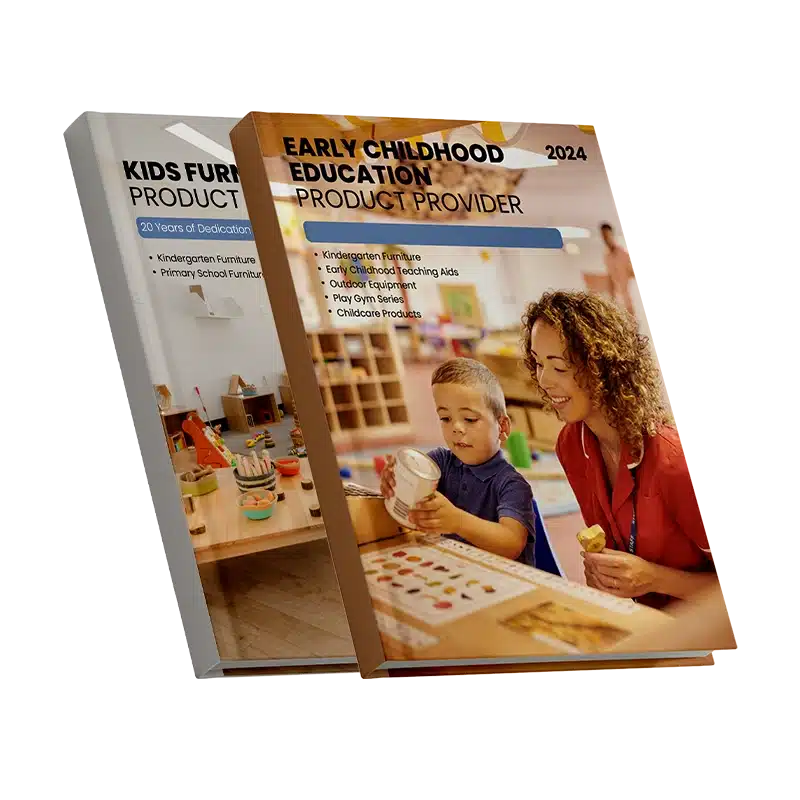
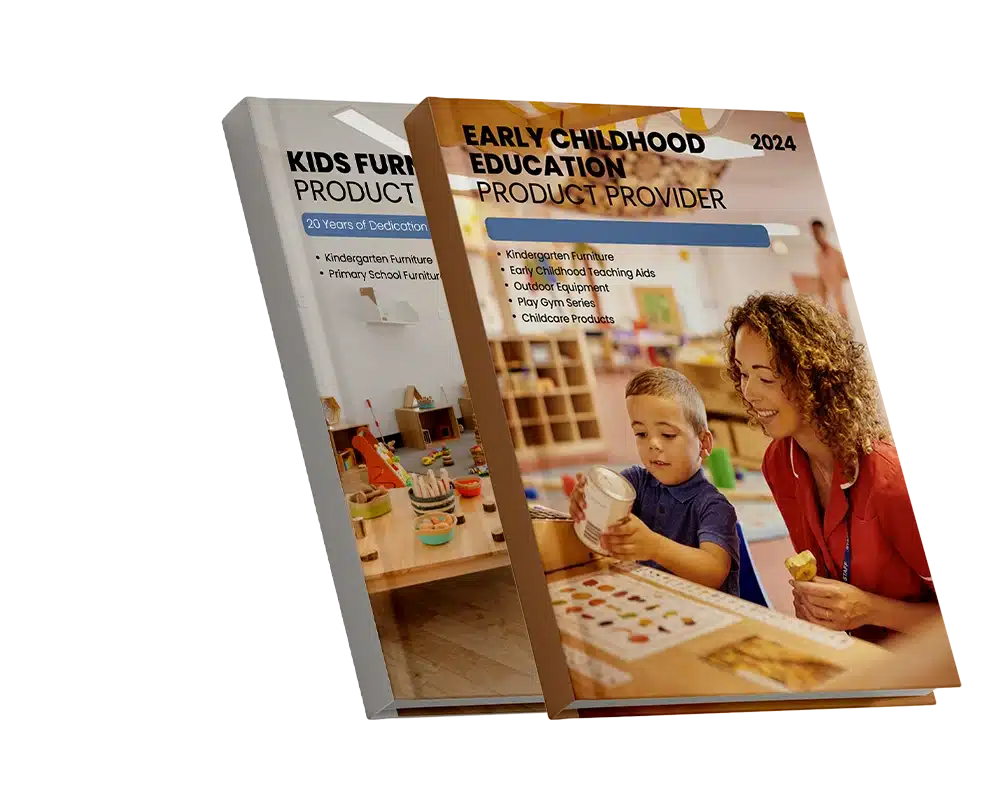
Tips for Setting Up and Managing a Nap Room
Designing a beautiful daycare nap room is only half the story—keeping it safe, organized, and well-managed every day is where the real work happens. From age-appropriate spacing to emergency planning and routine cleaning, every detail matters when creating a room that truly supports restful sleep.
These practical tips will help you set up and manage your nap room with intention, making it safer and more efficient for both children and staff.
Separating Age Groups and Personal Space
Children of different ages don’t just have different nap schedules—they also have different spatial and emotional needs during rest time. A well-organized daycare nap room takes this into account by intentionally separating age groups and giving each child a clearly defined personal space.
Doing this helps in three important ways:
- It minimizes overstimulation, especially for younger or more sensitive children
- It makes supervision safer and simpler, especially when children move around or wake up
- It helps children develop a sense of ownership and routine, which leads to more peaceful naps
Let’s look at how to manage space effectively for each age group.
Infants (0–12 months): Individualized Safety and Isolation
Infant nap spaces must be quiet, secure, and deeply individualized. Each baby naps on their own schedule, and many wake and sleep multiple times during the day.
Key considerations:
- Use individual cribs, ideally spaced at least 3 feet apart, to prevent the spread of illness and reduce noise
- Keep infants away from high-traffic zones, doors, and windows to reduce disturbance
- Maintain low lighting and soft colors to support restful sleep without visual stimulation
- If the room is shared with other age groups, use physical dividers (like curtains or low shelves) to buffer sound and movement
Each crib should be labeled clearly and used only by one infant. Position them so that staff can easily access and observe each child without reaching over another crib.
This approach not only meets most licensing standards—it also gives each baby the quiet, controlled environment they need to feel safe and rest deeply.
Toddlers (1–2 years): Predictable Boundaries and Gentle Separation
Toddlers are more aware of their surroundings—and more mobile. They nap at the same time each day, but they may still struggle with transitions or get distracted by others easily.
Here’s how to support them:
- Assign each toddler a designated mat or cot, placed in the same location every day
- Use colored floor tape, low cubbies, or storage bins to subtly define each child’s area
- Maintain at least 18–24 inches between mats to prevent touching, bumping, or rolling into each other
- Place lighter sleepers near walls or quiet zones, and those who nap soundly closer to shared walkways
Some toddlers benefit from a small comfort item like a sleep sack or soft toy (if allowed). Having that item always available in their personal spot helps them feel secure.
This age group thrives on repetition and consistency. When they know “this is my space,” they settle more quickly—and nap time becomes easier for everyone.
Preschoolers (3–5 years): Emotional Comfort and Respect for Boundaries
Preschoolers are often more independent, but that doesn’t mean they don’t need structure. In fact, because they’re more socially aware, they may be even more sensitive to how space is shared.
To support preschoolers:
- Allow them to help set up their own mat and bedding each day—it gives a sense of control
- Use name labels, visual cues, or even floor signs to show where each child belongs
- Ensure clear walkways between mats for easy supervision and to avoid accidental contact
- Be mindful of dynamics—some children prefer to nap near a friend, while others may need distance from chatter or fidgeting neighbors
Even though some preschoolers may no longer nap every day, having a clearly defined, personal nap area still supports quiet rest time. It gives them a mental “pause” zone—a safe, soft space where they don’t have to perform or participate.
When setting up a daycare nap room, it’s tempting to think in terms of square footage—but the most effective layouts are built around developmental needs.
Infants need protection and silence. Toddlers need boundaries and repetition. Preschoolers need autonomy and respect.
By adjusting the space to match how each age group sleeps and interacts, you create a nap environment that is not just functional, but truly supportive of children’s growth and well-being.
Safety Measures Every Nap Room Needs
No matter how calm and cozy your daycare nap room may feel, safety must always come first. From fire exits to supervision ratios, a well-prepared nap room keeps children protected at all times—even while they sleep.
Emergency Exits and Accessibility
Every nap room should be:
- Equipped with at least one clearly marked, unobstructed emergency exit
- Laid out with wide enough walkways to evacuate children quickly, even while asleep
- Accessible to children with disabilities or limited mobility, including crib-wheel access or ramps when necessary
- Free from stacked furniture, large decor, or closed doors that block exit routes
Staff should know and practice evacuation procedures during nap time, including how to move multiple children efficiently and safely. Crib evacuation kits or soft evacuation sleds may be required by your local regulations.
Don’t forget: posted emergency plans, exit maps, and emergency contact lists should be clearly visible and up to date in every nap area.
Supervision and Staff-to-Child Ratio
Sleep time doesn’t mean supervision stops. On the contrary—many jurisdictions require constant, active supervision during naps. That means:
- Staff must be physically present in the room, not watching from a monitor or across the hall
- Visual checks are often required every 10–15 minutes
- Infants must be monitored individually, with staff checking for movement, breathing, and sleep posture
Staff-to-child ratios vary by age and region, but here’s a general guideline:
- Infants (0–12 months): 1 adult per 3–4 children
- Toddlers (1–2 years): 1 adult per 4–6 children
- Preschoolers (3–5 years): 1 adult per 8–10 children
Always follow your local licensing laws—but when in doubt, err on the side of more supervision, not less.
Cleanliness and Daily Maintenance Routines
Cleanliness isn’t just about appearances—it’s about health. A clean daycare nap room reduces the spread of illness and creates a comfortable, calming atmosphere. Since bedding and sleep equipment are used daily, they must be part of a strict cleaning schedule.
Here’s what a solid maintenance routine might include:
- Daily: Wipe down mats, cots, cribs, and high-touch surfaces
- Weekly (or as needed): Launder blankets, sheets, and soft items with child-safe detergent
- Monthly: Deep-clean flooring, wall corners, and ventilation grilles
- Ongoing: Immediately clean and disinfect any soiled bedding or furniture
Assign cleaning duties clearly, use labeled laundry bins, and keep extra bedding on hand to minimize disruptions. Children may not notice when things are clean—but they always feel it when they’re not.
Organization and Clutter Control
A well-managed daycare nap room should feel calm—not chaotic. That starts with smart organization. Cluttered spaces overstimulate children and make it harder for staff to supervise or respond quickly.
Simple strategies for clutter control:
- Label everything—bedding bags, storage bins, cot frames, personal comfort items
- Use mobile carts or under-crib drawers to reduce tripping hazards
- Keep walkways clear at all times, especially near exits
- Hide visual distractions (e.g., toys, books, bright posters) during nap time
When children know where their things go—and when teachers aren’t constantly stepping over clutter—everyone feels more relaxed.

Creating a Comfortable Sleep Environment
A well-planned daycare nap room doesn’t just meet safety standards—it feels calm the moment you walk in. A truly restful space supports not only physical sleep but emotional ease. The goal is to reduce distractions, regulate the senses, and create an atmosphere that helps children feel safe, relaxed, and ready to rest.
Below are the key environmental elements that contribute to a comfortable and consistent nap room experience.
Light Management and Blackout Solutions
Light plays a powerful role in sleep regulation. In a daycare nap room, natural daylight may be too harsh, while bright overhead lights can overstimulate children as they try to wind down.
Effective light management tips:
- Use blackout curtains or light-filtering shades to dim natural light without making the room pitch black
- Install dimmable overhead fixtures or soft lamp lighting with warm bulbs for a gentle glow
- Consider motion-sensor night lights near exits or cribs to assist with quiet checks without waking others
- For multi-use rooms, invest in portable room-darkening panels that can be rolled away after nap time
Avoid strobe-effect lighting (like flickering fluorescents) and overly blue light tones, which can signal wakefulness instead of rest.
Noise Reduction Strategies
Nap rooms need to buffer the world outside. Footsteps in the hallway, playground noise, or chatting in the kitchen can easily disrupt rest—even for deep sleepers.
Simple sound strategies for daycare nap rooms:
- Use foam rugs, fabric wall panels, or ceiling baffles to absorb ambient sound
- Lay non-slip mats under cots to prevent squeaking or shifting
- Cover shelves or storage bins with fabric skirts or curtains to reduce echo
- Keep doors soft-close and oil hinges regularly
White Noise Machines and Soundproofing
A white noise machine can be a simple yet powerful addition. It masks sudden noises and creates a soothing baseline hum, much like the womb sounds babies find comforting.
Look for:
- Consistent low-frequency sounds (avoid ones with noticeable loops)
- Portable options for classrooms that transform during the day
- Machines with volume control and timer features
For settings that allow renovation, adding acoustic insulation to nap room walls or ceiling tiles can make a big difference in long-term noise control.
Room Temperature and Air Quality Control
Children sleep best in environments that are cool, quiet, and well-ventilated. Yet nap rooms are often closed off for quiet, which can lead to stuffiness or poor airflow.
To maintain a healthy nap space:
- Keep the room at a stable 68–72°F (20–22°C), depending on season and ventilation
- Use HEPA air purifiers to reduce allergens, odors, and dust
- Crack windows (if safe) for fresh air circulation, or run silent-mode fans
- Choose low-VOC paints and finishes for walls and furniture to improve air quality
- Place temperature monitors or humidity sensors in infant sleep areas for extra security
Subtle air scenting (like light lavender diffusers) may be appropriate in toddler or preschool rooms, but avoid any strong fragrances—especially in infant spaces.
Soothing Décor and Color Schemes
Visual elements deeply influence a child’s emotional state. A stimulating room full of bright posters, high-contrast images, or cartoon characters can make it harder for young minds to “switch off.”
A soothing daycare nap room should use:
- Muted tones like sage green, soft lavender, pale blue, or warm beige
- Natural textures like wood, soft fabrics, and woven baskets
- Minimal patterns—simple shapes or gentle gradients work best
- Low wall art at child’s eye level with calming themes (nature, sky, water, animals)
Calming Wall Art, Curtains, and Sensory Elements
Don’t underestimate the power of small visual cues:
- Neutral-toned curtains double as light filters and cozy “room softeners”
- Use fabric wall hangings or canvas prints instead of framed glass (for safety)
- Add a soft sensory corner with tactile-friendly materials—velvet, fleece, or soft felt
Avoid anything that overstimulates or sparks too much curiosity during nap time (e.g., mirrors, toys, animated characters).
The environment should feel predictable, soft, and emotionally “safe.”
A calm daycare nap room isn’t about expensive design—it’s about the emotional effect of space. When lighting is gentle, sound is controlled, the air feels fresh, and colors soothe the eye, even high-energy children begin to unwind. Thoughtful environmental design turns a basic nap space into a haven—one where rest comes naturally, not as a battle.
These sensory details may seem small, but together they create something powerful: a nap room that works with children’s needs, not against them.

Conclusion
Creating a well-designed daycare nap room isn’t just about following regulations or checking boxes—it’s about building a space where children feel safe enough to rest, calm enough to fall asleep, and supported enough to wake up refreshed and ready to rejoin the day.
Throughout this guide, we’ve explored everything it takes to set up a successful daycare nap room, from selecting age-appropriate cribs, mats, and storage solutions, to managing lighting, noise, and air quality. We looked at how to separate age groups, how to keep the room hygienic and clutter-free, and how even the smallest design choices—like soft wall art or breathable fabrics—can impact children’s emotional comfort.
What makes a daycare nap room truly effective isn’t its size or its price tag—it’s the thought behind it. When the environment is consistent, soothing, and developmentally appropriate, children naturally settle into rest routines. Staff find their rhythm too, gaining confidence in the space they manage daily.
Whether you run a large center with multiple nap zones or a small home-based program with a single shared space, the principles are the same: prioritize safety, invest in comfort, support routine, and respect every child’s need for a peaceful place to sleep.
In short, a thoughtfully arranged daycare nap room is more than a sleeping area—it’s a place of emotional reset, physical care, and daily renewal. When done well, it becomes one of the most powerful tools in your childcare environment.
FAQs
What’s the ideal size for a daycare nap room?
A good rule is 35–50 sq ft per child, providing space for mats or cots, supervision, and walkways—always confirm with your local regulations.
Can a daycare nap room double as a classroom?
Yes—many spaces transition from learning to rest. The secret lies in consistent routines, dimmable lighting, portable mats, and visual signals that indicate “sleep time.”
How often should bedding in the daycare nap room be cleaned?
Sheets and blankets should be washed weekly, or sooner if needed. Mats and cots require daily wiping to maintain hygiene and air quality.
Is white noise safe and effective in a daycare nap room?
Yes—at around 50–55 dB, white noise helps block distractions. Opt for units with timers and low-frequency loops for a calm environment.
How do I handle different temperature needs in the nap room?
Aim for 68–72 °F (20–22 °C). Use layered bedding, HEPA filters, and temperature/humidity monitors to accommodate infants through preschoolers.
Can decor in a daycare nap room support calming moods?
Absolutely. Soft tones (e.g., pale blue, sage) combined with natural textures like woven baskets or felt panels can reduce stimulation and foster calm.
Should nap room mats or cots be individually labeled?
Yes. Labeling mats or bedding with each child’s name or photo encourages ownership, reduces mix‑ups, and maintains hygiene in your daycare nap room.
How much spacing should be between mats or cots?
Maintain 18–24 inches between toddler or preschooler mats, and at least 3 feet between infant cribs. Proper spacing supports hygiene, supervision, and sensory comfort.



